The Benefits of Combining ABA Therapy with Occupational Therapy


Enhancing Outcomes for Children with Autism and Developmental Challenges
Combining Applied Behavior Analysis (ABA) therapy with occupational therapy (OT) creates a powerful, holistic approach to support children with autism spectrum disorder (ASD) and developmental delays. This integrated model leverages the distinct strengths of each therapy—behavioral modification and skill development—to promote meaningful, lasting improvements across multiple areas of a child's life. As research underscores the efficacy of multidisciplinary strategies, understanding how these therapies work together is vital for maximizing developmental potential and improving quality of life.
Understanding How ABA and Occupational Therapy Complement Each Other

How do ABA therapy and occupational therapy work together to improve developmental outcomes?
ABA therapy and occupational therapy each target different aspects of a child's growth, but they work best when combined.
ABA, or applied behavior analysis, focuses on understanding and changing behavior patterns. It teaches social skills, communication, and daily routines through structured routines and positive reinforcement. This helps reduce challenging behaviors and encourages adaptive skills.
Occupational therapy (OT), on the other hand, helps children develop essential life skills such as dressing, eating, and self-care. It also addresses sensory processing issues and improves fine motor skills, which are crucial for tasks like writing or using communication devices.
When these therapies are combined, they offer a balanced approach. ABA addresses behavioral challenges and skill acquisition, while OT enhances physical and sensory capabilities.
Through collaboration, therapists can set shared goals, align strategies, and tailor interventions to meet each child's unique needs. This teamwork helps children generalize skills across different environments like home and school, resulting in overall better development.
A child benefiting from this integrated plan often shows greater independence, improved communication, and better ability to participate in daily activities. Interdisciplinary communication ensures consistency and maximizes the effectiveness of treatment, leading to more positive and lasting results.
Roles of ABA and OT, and When to Use Them in Tandem

What are the roles of ABA and occupational therapy, and when is it appropriate to use them together?
Applied Behavior Analysis (ABA) and occupational therapy (OT) each serve distinct but complementary roles in supporting children with autism.
ABA therapy primarily focuses on understanding and modifying behavior through reinforcement strategies, prompting, and structured routines. Its goal is to teach socially significant skills, reduce challenging behaviors, and promote adaptive behaviors. ABA can effectively address communication difficulties, social skills, and daily routines by breaking tasks into manageable steps and rewarding progress.
In contrast, occupational therapy centers on developing essential daily living skills, such as dressing, eating, and personal hygiene. OT helps children improve motor coordination, sensory processing, and independence — enabling them to participate more fully in everyday activities.
When should these therapies be combined? Typically, a child exhibiting complex needs that involve behavioral challenges, sensory sensitivities, and functional skill deficits benefits from an integrated approach. The combination allows for a comprehensive treatment plan that targets multiple developmental areas simultaneously.
Using ABA and OT together enhances the generalization of skills across environments like home and school. It also encourages better communication between therapists, fostering more cohesive goals.
Joint planning ensures interventions work in harmony, reinforcing each other’s strategies. This collaborative effort supports holistic progress, helping children develop physical, emotional, and social skills more effectively than with either therapy alone.
Ultimately, combining ABA and OT provides a tailored, versatile approach that adapts to each child's unique strengths and challenges, promoting overall growth and independence.
Key Benefits of Combined ABA and OT for Child Development
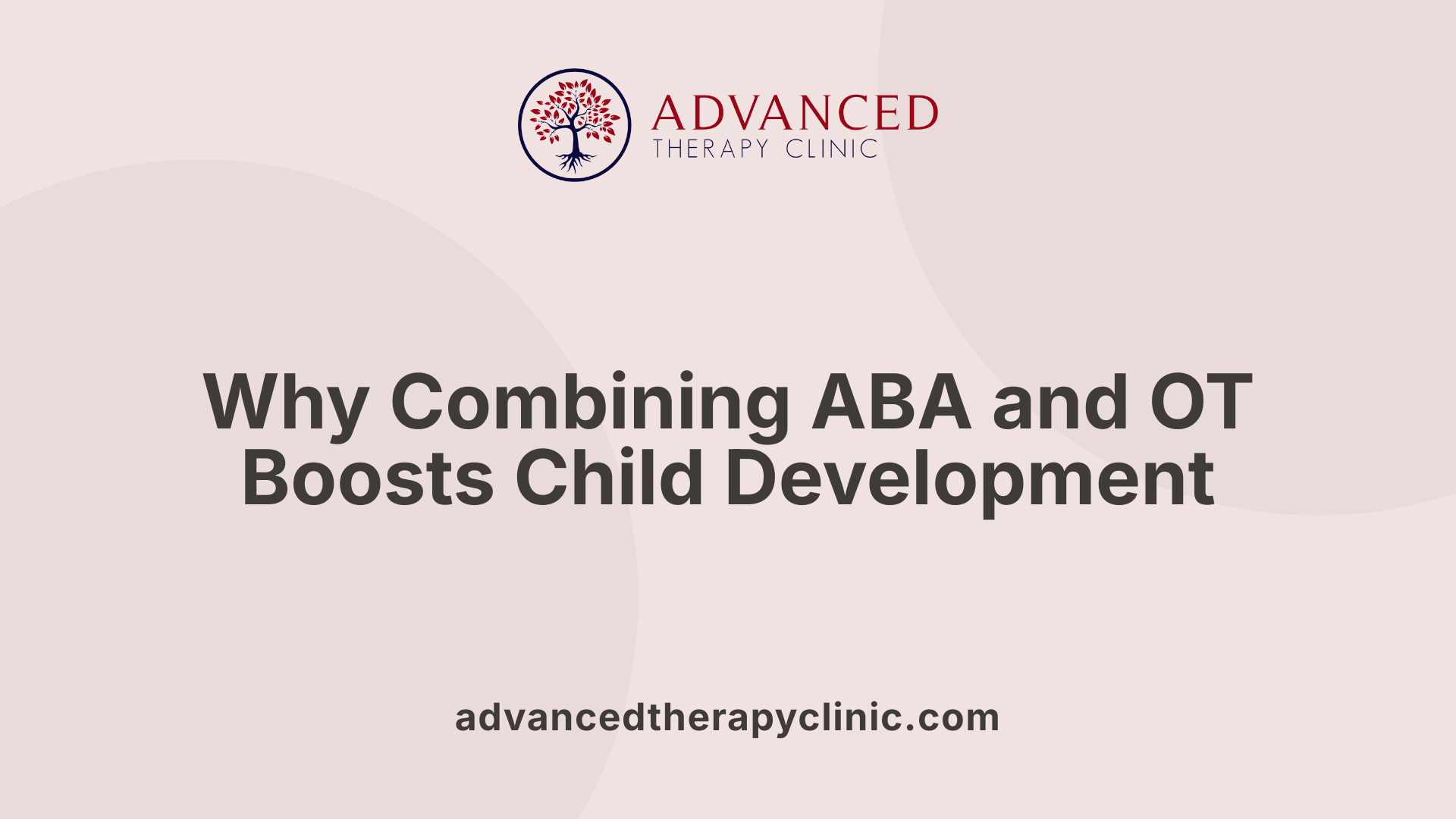
What are the advantages of combining ABA therapy and occupational therapy for children with autism or developmental needs?
Merging ABA and occupational therapy creates a well-rounded, personalized support system for children with autism. ABA therapy primarily emphasizes behavior modification and skill learning through positive reinforcement. It helps children develop communication, social, and daily living skills by breaking tasks into manageable steps.
On the other hand, occupational therapy focuses on foundational skills such as sensory processing, fine motor abilities, and self-care routines. It helps children adapt to sensory input and manage physical challenges, fostering greater independence.
When these therapies work together, children can better transfer skills across different settings like home, school, and community. This integration ensures that progress in one area reinforces growth in another, leading to noticeable improvements in behavior, communication, and daily functions.
Therapists and families collaborating on shared goals and strategies heighten the effectiveness of interventions. The combined approach accelerates developmental milestones, supports holistic growth—covering physical, emotional, and social domains—and ultimately improves children's independence and quality of life.
Incorporating both therapies also enhances consistency in routines and responses across environments. This consistency helps children feel more secure and motivated to learn new skills, contributing to faster progress and a broader scope of developmental gains.
Skills Gained from a Dual Therapy Approach

What specific skills can children gain from a combined therapy approach of ABA and occupational therapy?
Children benefit significantly from integrating ABA and occupational therapy, experiencing improvements across multiple areas.
In terms of communication, children learn to articulate words, understand language, and use social cues effectively. They may also develop alternative communication methods, such as using picture exchange communication systems (PECS).
Social interaction skills are also enhanced, with children engaging more confidently in peer activities, taking turns, sharing, and initiating conversations. These improvements foster better peer relationships and social engagement.
Daily living and sensory processing skills are targeted through OT, promoting independence in dressing, eating, hygiene, and motor coordination. Sensory integration techniques support children in managing sensitivities and reducing challenging behaviors related to sensory overload.
The collaborative approach promotes the generalization of these skills across environments—whether at home, school, or in community settings—ensuring that children can apply what they learn in real-life situations.
Overall, the combination of ABA and OT offers a tailored, holistic pathway to boost a child's development, increase independence, and improve overall quality of life.
Impact of Multimodal Treatment on Children with Autism and Developmental Delays

How does combined therapy impact children with autism spectrum disorder and developmental delays?
Combining applied behavior analysis (ABA), speech therapy, and occupational therapy creates a well-rounded support system that profoundly benefits children with autism and developmental delays. These therapies work together to target different developmental areas, leading to more holistic progress.
ABA therapy focuses on behavior modification, helping children learn new skills and improve social interactions through positive reinforcement. It often breaks down complex tasks into smaller, manageable steps, encouraging gradual skill acquisition. Speech therapy complements this by enhancing communication, including language understanding, articulation, and social language use. It helps children express their needs and better engage with others.
Occupational therapy (OT) plays a crucial role by working on daily living skills, sensory processing, and fine motor development. OT helps children manage sensory sensitivities, develop independence in tasks like dressing and eating, and improve motor coordination.
When these therapies are integrated, they reinforce each other’s goals, fostering progress across multiple developmental domains. For instance, improvements in sensory regulation from OT can help a child better participate in ABA-guided social interactions. Likewise, communication skills gained in speech therapy support social behaviors taught in ABA.
This coordinated approach accelerates skill development and promotes lasting changes. Children are often better able to manage behaviors, communicate effectively, and succeed in everyday environments like school and home.
Research supports the effectiveness of this combined strategy, citing improvements in behavior, communication, sensory processing, and independence. The collaborative effort among therapists and families ensures that goals are aligned, and strategies are consistently reinforced.
In summary, an integrated treatment plan blending ABA, speech, and occupational therapy provides a comprehensive framework that significantly enhances the developmental outcomes and quality of life for children with autism and delays.
Supporting Evidence and Effective Practices in Therapy Integration

What evidence supports the combined use of ABA and occupational therapy?
Research consistently shows that integrating ABA and occupational therapy (OT) can produce more comprehensive benefits for children with autism spectrum disorder (ASD). Both therapies are rooted in strong evidence: ABA focuses on behavior modification using reinforcement, while OT addresses sensory processing, motor skills, and daily functioning.
Studies, including those published in respected journals like the Journal of Autism and Developmental Disorders, reveal that children receiving combined treatments exhibit greater improvements in communication, behavior, and daily living skills compared to those receiving single therapies.
This collaborative approach allows therapists to align their strategies, share insights, and target overlapping areas like social skills and sensory regulation more effectively. The integration enhances not only skill acquisition but also generalization across environments such as home and school.
By leveraging the strengths of both disciplines, families and practitioners can design personalized intervention plans. These plans are more adaptable, targeted, and capable of addressing the complex needs of children with ASD, ultimately leading to faster progress and better quality of life.
Overall, scientific evidence advocates for the combined use of ABA and OT as a best practice in comprehensive autism intervention, emphasizing a holistic, individualized approach.
The Importance of a Multidisciplinary Team for Optimal Outcomes
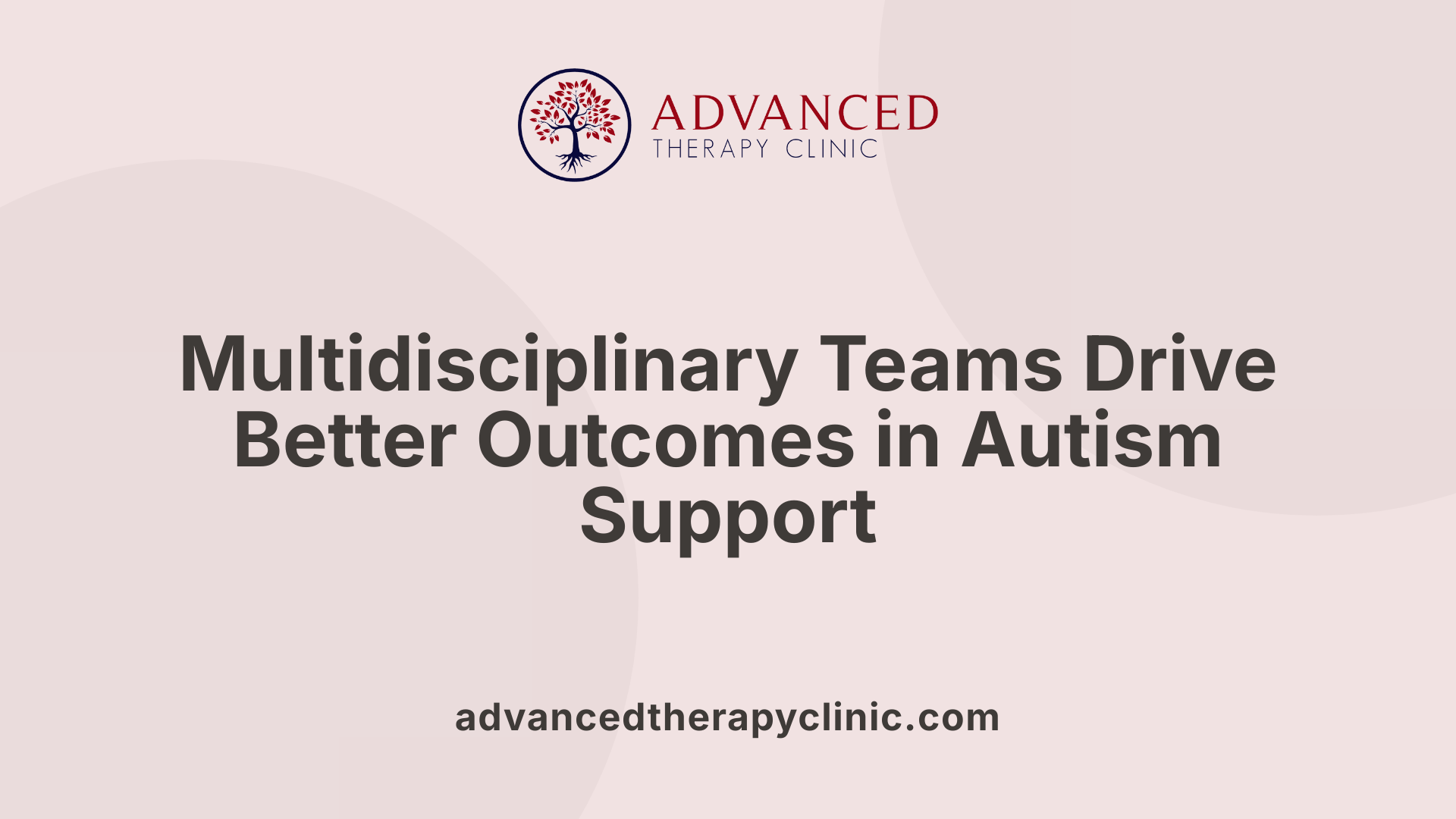
What is the benefit of multidisciplinary approaches that include ABA, occupational, and speech therapies?
A multidisciplinary approach combining ABA, occupational therapy (OT), and speech therapy offers a well-rounded strategy to support children with autism who have diverse needs. These therapies work together to target behavioral, communication, social, sensory, and daily living challenges simultaneously.
Each professional brings specialized skills to the table. ABA therapists focus on behavior modification, teaching new skills through reinforcement and structured routines. Occupational therapists address sensory processing issues, motor skills, and independence in daily tasks like dressing or eating. Speech therapists enhance communication abilities, including language comprehension, articulation, and use of alternative communication tools.
This collaboration ensures that interventions are cohesive, tailored specifically to each child's strengths and needs. When specialists work together, they create consistent strategies that can be applied across different settings—home, school, and community.
Family involvement is a vital part of this approach. Shared goals and coordinated efforts lead to improved functional outcomes, such as better social interactions, increased independence, and enhanced communication skills. By addressing multiple developmental areas at once, children experience more meaningful progress, promoting long-term success and improving their overall quality of life.
Research supports these benefits, showing that children receiving integrated multidisciplinary treatment often show greater gains compared to those receiving isolated therapies. Overall, this comprehensive model aligns with best practices for supporting complex developmental needs in children with autism.
Empowering Children Through Integrated Therapies
The integration of ABA therapy with occupational therapy creates a comprehensive support system that addresses diverse developmental needs, fostering independent skills and meaningful participation in daily life. Evidence-based, personalized, and collaborative, this multidisciplinary approach amplifies progress, enhances quality of life, and paves the way for better long-term outcomes for children with autism and developmental challenges. Engaging families and professionals in a coordinated effort ensures that progress is sustained across all environments, ultimately empowering children to reach their full potential.
References
- The Benefits of Combining ABA and Occupational Therapy
- How ABA, Speech, and Occupational Therapy Work Together | Bista
- Benefits Of Combining ABA And Occupational Therapy For Autistic ...
- When to Combine Occupational Therapy and ABA for Children
- Integrating Speech and Occupational Therapy with ABA
- Collaboration between Behavior Analysts and Occupational ...
- Occupational Therapy and ABA | How They Work Together
- The Importance of Combining ABA, Speech Therapy, and ...
- How Occupational Therapy and ABA Go Hand-In-Hand - PediaPlex
Recent articles
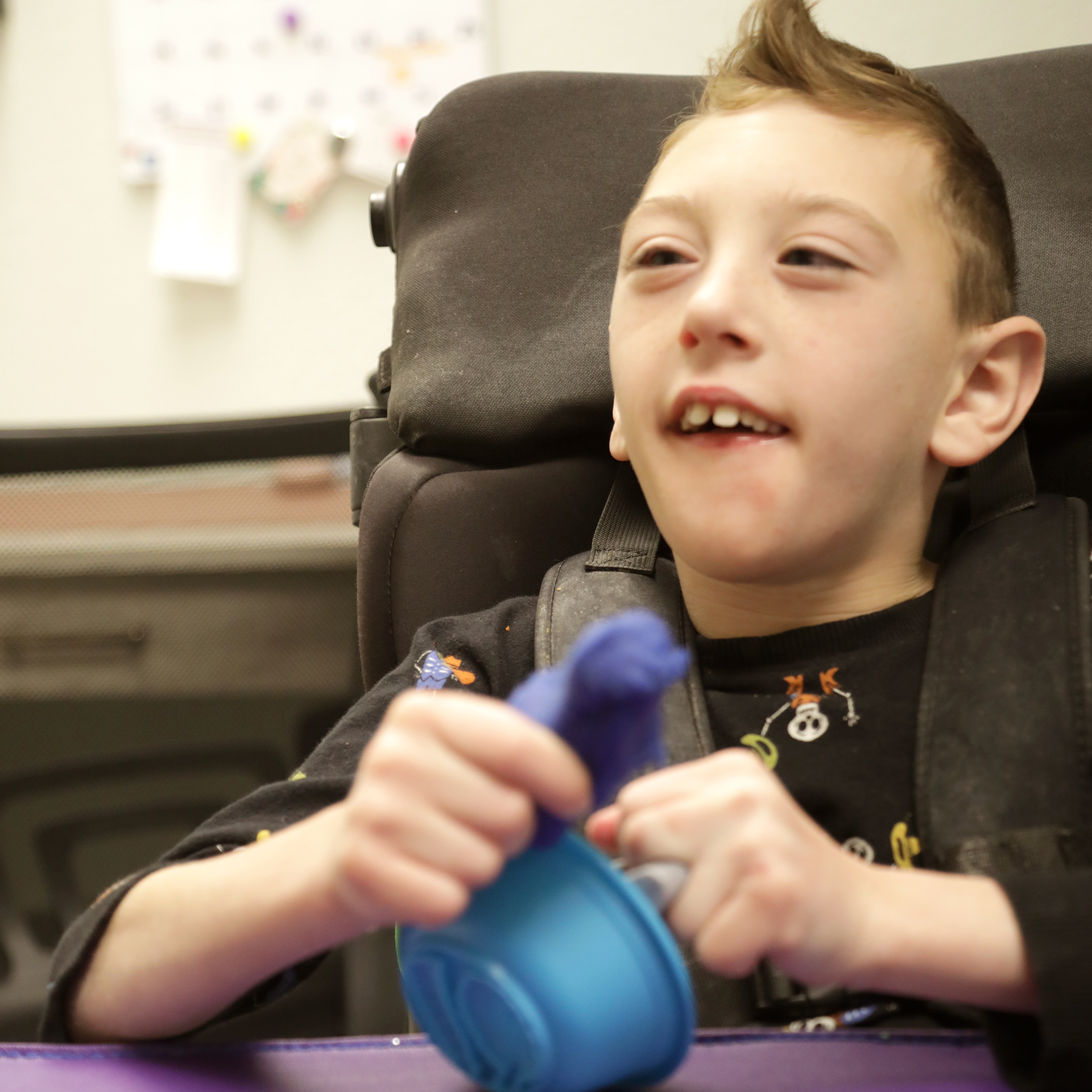
How Pediatric Therapy Helps Kids Thrive across Montana and Wyoming
A supportive guide for families exploring therapy options in Billings, Butte, Missoula or Sheridan.

How to Choose the Right Pediatric Therapy Clinic in Billings, Montana
A Parent‑Friendly Guide To Finding The Best Support For Your Child
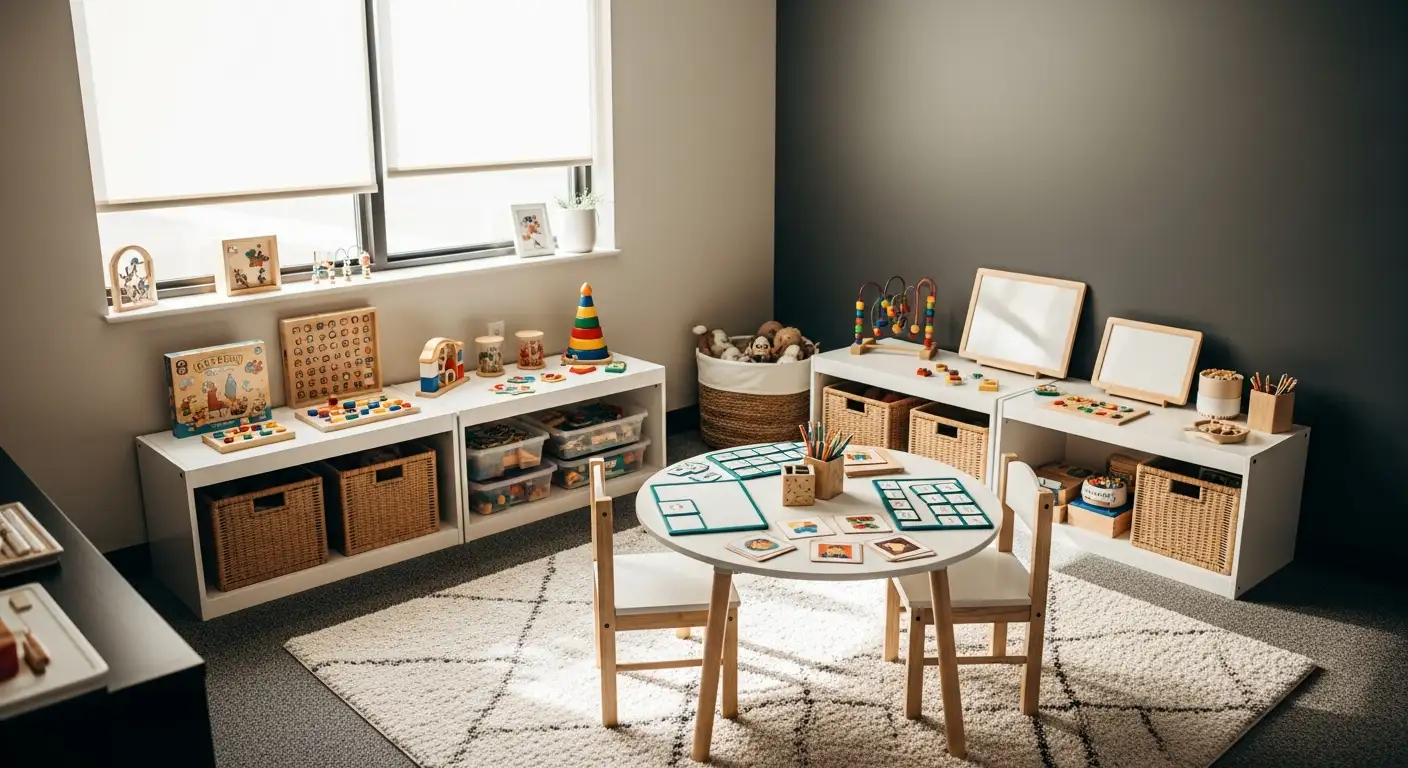
Expressive Speech Delay 2-Year-Old
Understanding and Addressing Expressive Speech Delay in Toddlers

How Speech Recognition Works
Unlocking the Power of Speech Recognition in Therapy and Healthcare

Autism and Head Size
Understanding the Complex Relationship Between Autism and Head Size
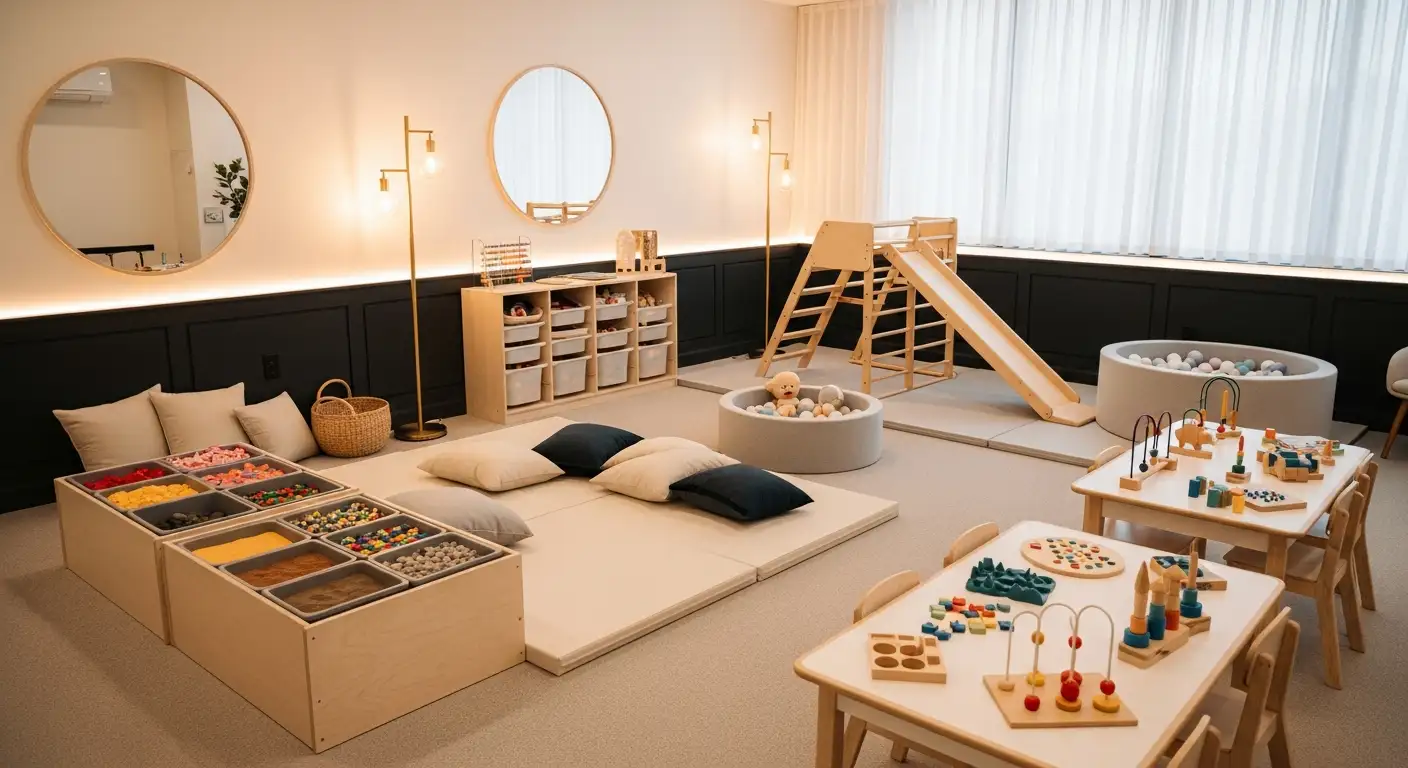
Occupational Therapy in Autism
Enhancing Independence and Quality of Life Through Occupational Therapy in Autism

